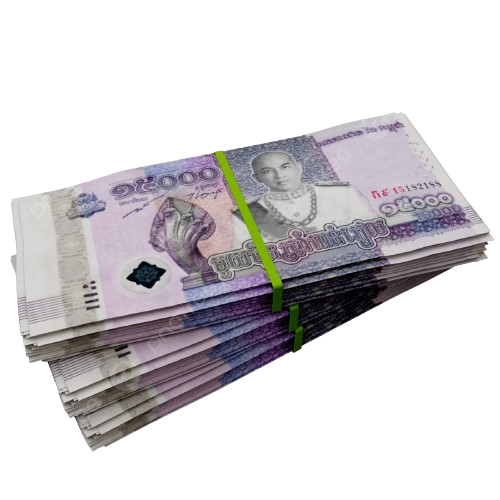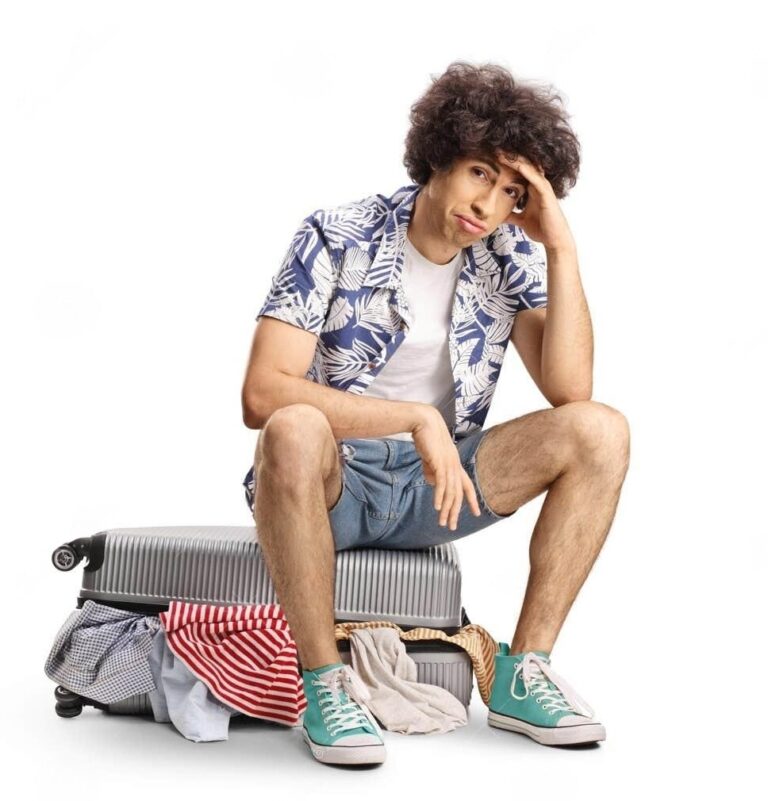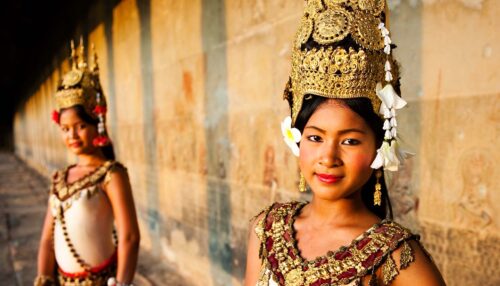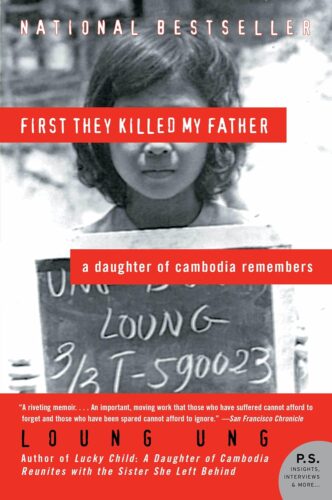Cambodia Information & Resources Page
Hello there! Welcome to our ultra-secret information & resources page, specially built just for our guests who are coming to Cambodia. This page is not linked from our main website, so if you’re reading this, consider yourself inside the circle!
Here you’ll find a handcrafted collection of suggestions that will help you prepare for your upcoming trip to Cambodia, everything from what to pack, to tips on health and safety, and even Smiling Albino-endorsed books, movies and television shows that you can watch to learn more about the places you’re going to be traveling in. Exciting!
So while we’re building and refining all the details of your upcoming trip, please grab a beverage of your choice, put your feet up, and start to scroll.
Visas
There are two ways to get a visa for Cambodia:
- Visa-In-Advance: either through a local Cambodian consulate, or more easily online for $30US at this link: http://www.mfaic.gov.kh/evisa/
The online visa is quite simple and it really works! It’s $30US + $7US processing charge online vs. $30US for getting a visa on arrival, but a nice option for travelers who like to have paperwork taken care of before leaving home.
- Visa-On-Arrival: It is easy to obtain a 30-day tourist visa upon arrival at either the Siem Reap or Phnom Penh airport. You need $30US cash (passport sized photos are no longer required). The process takes about 15 minutes and no advance preparations are required.
Money
Cambodia’s currency is the Riel (KHR). Notes come in ៛50, ៛100, ៛200, ៛500, ៛1000, ៛2000, ៛5000, ៛10000, ៛20000, ៛50000, ៛100000 denominations. You will find money changers in Cambodia’s airports, banks, and some high-end hotels. Many banks (open Monday to Friday) issue cash advances for Visa and MasterCard, usually for a 3% commission.
Credit cards are accepted at upper-end hotels and restaurants. Traveler’s cheques are accepted at banks and hotels, but usually not at stores. You will find 24-hour ATMs in the larger towns. These ATMs only issue Cambodian Riel. American dollars are welcomed in hotels and higher-end restaurants, although you’ll need Riel for taxis and smaller shops. The exchange rate is roughly 4,000 KHR to 1 USD.
Major credit cards (VISA, Mastercard, American Express) are accepted at major retailers only and usually a 3-4% service fee is incurred.

Emergency Numbers
Because Cambodia’s version of 911 is operated only in Khmer, we recommend calling the below number if the need arises:
- SOS International: House 161, Street 51, 023-216-911, www.internationalsos.com
Health and Safety
For all Southeast Asian countries, following basic health precautions will ensure a hassle-free experience.
- Apply mosquito repellent during dawn and dusk.
- Drink plenty of bottled water (we will provide ample bottled water) and avoid uncooked meat and fish.
- A sun hat is recommended for days out. Not only does it look whimsical, it keeps the rays off your dome.
- Sampling market or ‘street food’ is generally okay and your hosts will steer you to safe bets.
- Cubed ice is preferable to crushed ice and avoid drinking tap water, but you likely won’t have to worry about this at any places we stop at, which all use ice from factories.
Check this vaccines and medicines list and visit your doctor at least a month before your trip to get vaccines or medicines you may need.

What to Pack, What to Wear?
The best word of advice is to travel light. While your Smiling Albino hosts will take care of your baggage and you’ll rarely need to carry personal items further than 100m, it’s important to consider that you’ll also have to manage your bags when you’re not with us.
Being comfortable in a hot climate is key, but also keeping local customs in mind is of prime importance. Cambodia by nature are rather modest and do not tend to show off flesh. When visiting temples they always wear a proper shirt and long pants. Every effort should be made to do so as well. While very hot, be sure to wear a shirt that covers your shoulders and light pants if possible. If you just can’t manage pants in the heat, you could get away with long, polite shorts, but consider taking a sarong with you (or buying some from the local markets!) that you can wrap around your shoulders or lower-half when visiting temples.
Luggage Restrictions on Airlines
Most premium regional carriers in Southeast Asia, such as Thai Airways, Bangkok Airways, etc. have standard luggage limitations of 20kg per person. Air Asia, a no-frills flier, has a limit of 15kg. Overweight can be paid directly at check-in.
Haggling
In all markets and some stores (you usually know when it’s appropriate) negotiating price is very much the norm. If you keep the conversation friendly, take your time and don’t look too eager you can usually shave anything from 10-60% off the initial price. However, keep in mind that spending 30 minutes haggling over $0.50 is not really worth it.
How Does Tipping Work?
Tipping is a relatively new phenomenon in Southeast Asia – of course, like anywhere in the world (apart from Japan) tips are always appreciated, but in most establishments the staff won’t be upset if you decide not to tip. Here are a few tipping, uh… tips:
- Restaurants: If you are dining at a simple street side stall, you generally don’t tip (though it is common to let the stall holder keep the change if it’s a small amount). If you are at a casual sit-down restaurant, 10% will do it. If you are eating at a more upscale establishment check the bill as a 10% service charge is often added. Leaving extra is fine, but you don’t need to leave a lot.
- Hotels: If you’re pleased with the cleanliness of your room and the maid service, leave 1.50-3.00 USD per day that you stay on the bedside table each day. If a porter brings your bags to your room, then again 1.50-3.00 USD is acceptable. If you have received great service from a particular staff member during your stay – the concierge or a member of the security team for example – then a small tip on departure, say 5.00 USD is a nice gesture.
- Guides: Our guides do not accept commissions or kickbacks from vendors, and they are well paid and motivated to do a great job taking care of you. That said, if you are genuinely satisfied, they would be grateful for something extra. A general guideline would be between 10-15 USD per person per day. For a family doing a multi-day trip, approximately 5-10 USD per person per day. There are times when extraordinary service warrants more, but use your judgment as you would at home.
- Drivers: Our drivers are dedicated to their job, with your safety and comfort above all else. If you formed a relationship with your driver and they have exceeded expectations, you may wish to consider tipping 5-10 USD/day.
Cultural Tips
Cambodians are a pretty easy going bunch, very welcoming and friendly, but keeping a few simple things in mind will greatly add to your trip and your interaction with locals.
Heads & Feet: Much like Thais, Cambodians believe the head to be the highest spiritual part of the body and feet the lowest. As a consequence you should never touch a person on the head. The opposite holds true of your feet – use them for walking and that’s about it. Don’t point them at someone, fall asleep with them pointing towards someone and definitely do not hold doors open with them or let them point at a Buddhist image. Always remove shoes before entering homes or nice buildings (it will be obvious by the pile of shoes outside).
Greetings: When greeting people or to show respect use the traditional ‘sampeah’ gesture, which is similar to the Thai ‘wai’ or Nepalese ‘namaste’. Cambodians love exchanging business cards even during simple run-ins. It’s rather fun to have some printed up before your visit and hand them out at-will. Try to let others talk more than you. Then again, if everyone does this, conversations could be rather short!

Actions: Don’t sit with your legs crossed as this is considered impolite. Close doors gently. Not doing so indicates you have a bad temper. When handing something to someone, use only your right hand. Conversely when receiving something, do so with your right hand, supporting your elbow with your left hand. When calling someone over, motion with your hand down. If you motion with your hand up it can have sexual connotations. When you finish using chopsticks put them across the top of a bowl, not on an angle in it as it resembles incense that are left for the dead.
The Body: Khmers are a rather conservative bunch and do not appreciate bare skin. Don’t walk around with your shirt off (unless you’re on a beach of course) and certainly do not under any circumstances tan nude or topless if you are a woman. When visiting temples be sure to cover shoulders and legs. This means a shirt with as much coverage as a t-shirt and preferably pants or long shorts.
Shopping
Your guides and ground team are trustworthy and they have your best interests at heart. We have a very strict policy against kickbacks and commissions. We would never compromise your free will for 3rd party gain or to appease alliances of convenience.
Cambodia is a fantastic place for shopping opportunities. Bargaining should be good-natured, smile and don’t get angry or argue. Once the money is accepted, the deal is done. In some cases you will be able to get a 50% discount or more, at other times this may only be 10%.
What to See, What to Read?
Whether you’re preparing for your adventure, currently enjoying it or reminiscing years later, food for the soul is always a good thing. These picks can be enjoyed while overlooking the Tonle Sap, lazing on a stunning beach, riding the plane or lounging on your couch at home. Here are some books and movies we enjoy that cover a broad slice of Cambodian life and history.

Books
The Gate, Francois Bizot – The author’s account of living in Cambodia during the Khmer Rouge’s rein, being arrested by them, then later serving as their translator – gripping.
Brother Number One, David P. Chandler – A scholarly biography of the Khmer Rouge leader Pol Pot.
First they Killed my Father, Luong Ung – An incredibly moving tale of the author’s family and their struggle during the reign of the Khmer Rouge.
Culture Shock! Cambodia, Peter North – A fun, quick intro to do’s, don’ts and everything else you’ll need to know.
Lonely Planet Cambodia, Nick Ray- Possibly the best guidebook to the region.
Music
- Bossanova 068, various artists: A soiree of 1970s Cambodian country classics sure to get your hips moving.
- The Music of Cambodia, various artists: A variety of songs introducing listeners to the entire array of traditional Khmer instruments.
Films
- Dogora (2004): A mesmerizing collage of shots of Cambodian life set to wonderful classical music. Truly a cinematic tour de force.
- Don’t Think I’ve Forgotten (2014): The story of Cambodia’s Lost Rock & Roll. A harrowing documentary about Khmer musicians who were forced to flee when the Khmer Rouge took control and decimated Cambodia’s flourishing music scene.
- City of Ghosts (2002): A con man goes to Phnom Penh to collect his share of an insurance scam. Filmed extensively on the streets of the capital.
- Tomb Raider (2001): The first Hollywood movie to be filmed at Angkor’s temples. While not a great film it’s neat to see the temples serve as wild backdrops.
- Pos Keng Kong (The Giant Snake) (2000): A wild tale of a girl born from a relationship between a rural woman and a snake king.
- People of the Rice Fields (1995): A tale of a family’s rural struggle.
- The Killing Fields (1984): An American citizen is trapped in Cambodia during tyrant Pol Pot’s bloody “Year Zero” ethnic cleansing campaign, which claimed the lives of two million “undesirable” civilians. A chilling tale of modern genocide.
